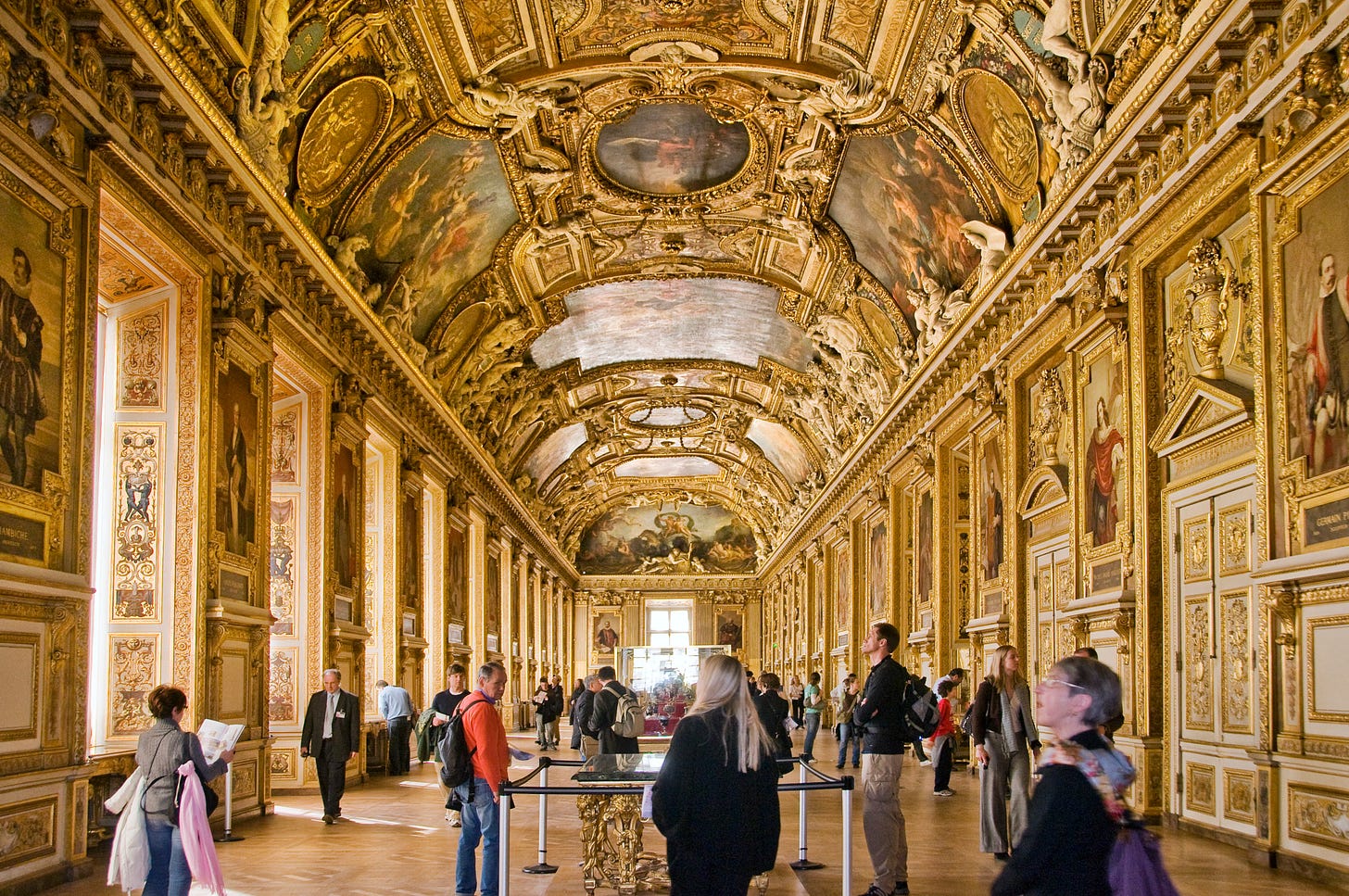Break up the big museums
Don’t rob the Louvre but we should redistribute the world’s art.
I love a good caper, so I was of course transfixed by the story of the Louvre heist earlier this month. But also, I’ve been to the Louvre probably five times in my life, and I’d never even seen the crown jewels that were stolen or been through the Galerie d’Apollon in which they’re located.
Scrutinizing the map of the museum, I see the problem. Whenever I was in that wing of the museum, I’d always either turned right after the Winged Victory of Samothrace, because that puts you on the shortest route to the Mona Lisa and Liberty Leading the People, or else walked straight ahead to more classical antiquities. To see the jewels, you need to go toward the antiquities but stop short and hang a right, detouring through the Galerie en route to the Renaissance Italian paintings. Who knew?
Which brings me to my point: There is way too much damn stuff in this museum!
I’m glad two of the perpetrators have been apprehended, and I hope the others who were in on it are nabbed soon. This is not a “stealing priceless items is good” take.
Still, there’s way too much stuff in this museum.
And though the Louvre is probably the number one exemplar of the over-large, over-stuffed museum located in a city that has a ton of other top-tier tourist attractions, it is far from unique in this regard.
An absurd number of ancient artifacts and premodern paintings are squirreled away in obscure rooms of gigantic museums — museums that most people simply do not have the patience or inclination or sensory processing capacity to take in. The Louvre displays several paintings by Vermeer up on the third floor, in a different wing from most of the other famous paintings. Which is great if you’re some kind of Louvre hipster, but in practice means a ton of people visit one of the most famous art museums in the world every day and totally miss great works from an extremely famous painter just because the logistics are tricky.
Art museums, for good reasons, are not for-profit businesses. But one nice thing about markets is they tend to avoid these kinds of allocative inefficiencies. The third best Titian painting in the Louvre’s collection is, in one sense, a priceless cultural artifact. In another, it has very little actual value to the Louvre, compared to the value it might have to an art museum in San Antonio or Singapore. This wildly unequal distribution of great works of art is a major source of inefficiency.
The global problem of under-tourism
There are more people alive than there used to be, they are richer on average than people used to be, and plane flights have gotten cheaper than they used to be, so a lot more tourism is happening now than in the past. This has generated a lot of discourse about “overtourism” that I think is fundamentally misguided — places dealing with surges of tourism demand are fundamentally much better off than places that nobody wants to visit.
But that’s the real problem.
Keep reading with a 7-day free trial
Subscribe to Slow Boring to keep reading this post and get 7 days of free access to the full post archives.


